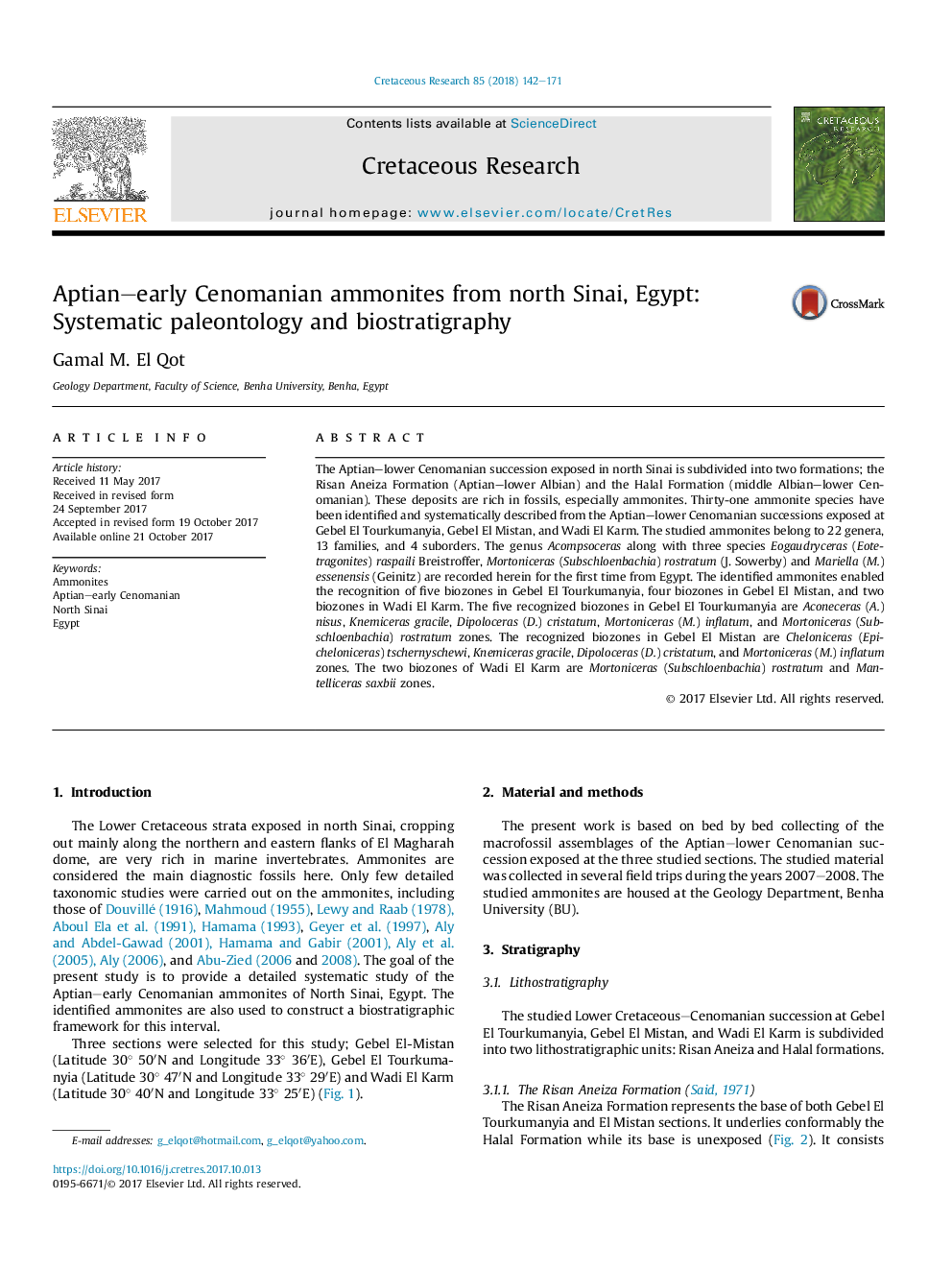| Article ID | Journal | Published Year | Pages | File Type |
|---|---|---|---|---|
| 8916341 | Cretaceous Research | 2018 | 30 Pages |
Abstract
The Aptian-lower Cenomanian succession exposed in north Sinai is subdivided into two formations; the Risan Aneiza Formation (Aptian-lower Albian) and the Halal Formation (middle Albian-lower Cenomanian). These deposits are rich in fossils, especially ammonites. Thirty-one ammonite species have been identified and systematically described from the Aptian-lower Cenomanian successions exposed at Gebel El Tourkumanyia, Gebel El Mistan, and Wadi El Karm. The studied ammonites belong to 22 genera, 13 families, and 4 suborders. The genus Acompsoceras along with three species Eogaudryceras (Eotetragonites) raspaili Breistroffer, Mortoniceras (Subschloenbachia) rostratum (J. Sowerby) and Mariella (M.) essenensis (Geinitz) are recorded herein for the first time from Egypt. The identified ammonites enabled the recognition of five biozones in Gebel El Tourkumanyia, four biozones in Gebel El Mistan, and two biozones in Wadi El Karm. The five recognized biozones in Gebel El Tourkumanyia are Aconeceras (A.) nisus, Knemiceras gracile, Dipoloceras (D.) cristatum, Mortoniceras (M.) inflatum, and Mortoniceras (Subschloenbachia) rostratum zones. The recognized biozones in Gebel El Mistan are Cheloniceras (Epicheloniceras) tschernyschewi, Knemiceras gracile, Dipoloceras (D.) cristatum, and Mortoniceras (M.) inflatum zones. The two biozones of Wadi El Karm are Mortoniceras (Subschloenbachia) rostratum and Mantelliceras saxbii zones.
Keywords
Related Topics
Physical Sciences and Engineering
Earth and Planetary Sciences
Palaeontology
Authors
Gamal M. El Qot,
